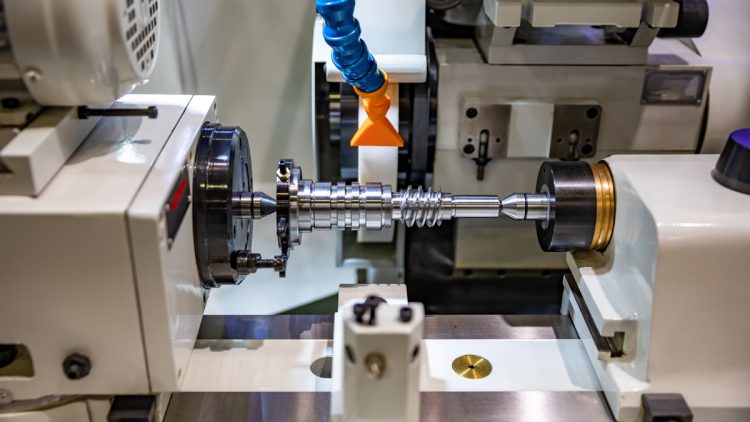What is а CNC Lathe?
A CNC lathe is a complex machine device intended for precision Computer Numerical Control manufacturing and turning by way of CNC.
It’s a personification of technological development, merging the age-old principles of a lathe machine with state-of-the-art computer programming to reach unparalleled efficiency and accuracy in machining.
The CNC lathe machine device has changed how materials are handled, making it an essential tool in various sectors and many machine shops across the world. Its capability to perform complex shaping and cutting with unbelievable precision makes it a foundation in current manufacturing processes. Whether it’s wood, metal, or plastic, the CNC lathe’s adaptability in handling various materials is unparalleled.
How Does a CNC Lathe Machine Work?
Getting into the inner workings of a CNC lathe uncovers a balance of computerized control and precision engineering. Different from a manual lathe, where the handiwork lies mainly in the hands of its operator, a CNC lathe incorporates computerized technology to improve precision and proficiency. Below is an in-depth look at its process:
Design Phase: To begin with, you, the operator, creates a meticulous design utilizing CAD (Computer-Aided Design) software. This design comprises of all specifications for the desired piece, from shapes to dimensions.
Programming: Your CAD design is then converted into G-code, the programming language that the CNC machine understands. This code gives instructions to the CNC lathe on how to move, shape, and create the piece.
Setup: After that, you configure the CNC lathe. This involves choosing and installing the proper cutting tools and fastening the workpiece onto the machine.
Machining Process: The CNC lathe, activated by the G-code, starts the machining process. The workpiece is spun at high speed while the cutting tool is moved across two or more axis to shape the piece.
Quality Inspected: During the process, the CNC lathe oversees the cutting environments and makes real-time modifications to guarantee precision. The final piece is inspected against the original specifications for preciseness.
What are the differences between horizontal and vertical CNC lathes?
The main differences between horizontal and vertical CNC lathes consists in their position and the applications they’re most appropriate for.
Horizontal CNC Lathes:
- Positioning: The spindle in this type of lathe is arranged horizontally, with the workpiece mounted vertically to the axis.
- Processes: Mainly used for longer, cylindrical workpieces.
- Pros: Easier chip withdrawal because of gravity, typically better for heavier and larger pieces.
- Limitations: Might not be suitable for parts with intricate geometries.
Vertical CNC Lathes:
- Positioning: The spindle is oriented vertically, with the workpiece connected to a horizontal chuck.
- Processes: Perfect for heavy, large-diameter, short workpieces.
- Pros: Gravity aids in securing the workpiece, decreasing the need for substantial clamping. Provides better access to the workpiece for certain operations.
- Limitations: Not as productive for long, slender workpieces where gravity can affect accuracy.
East Valley Precision – Custom Machinery Specialists
East Valley Precision offers custom CNC Turning in the Chandler, Arizona and surrounding areas. When you need precision CNC turning and milling contact East Valley Precision. Call us at 480-288-6601 for more information or use our form for a quote.

